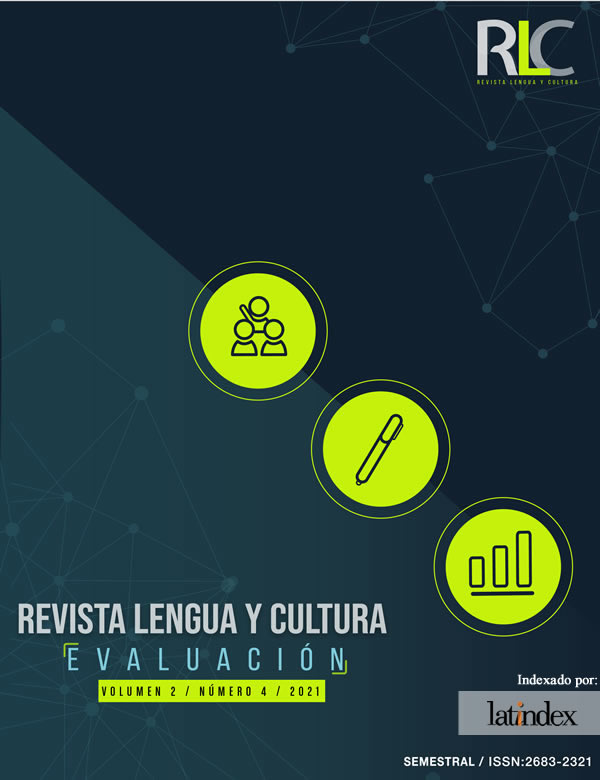Material design and its considerations
Abstract
Teacher’s role is a very broad discipline because they manage different functions like planning classes, evaluating, selecting activities and materials. In terms of materials, teachers are skillful for searching, adapting, and creating suitable material for their group or course. Although students’ needs, and characteristics vary in every course. This research brings up the questions: what is the material development process followed by language teachers? and what considerations arise from it? These questions, a study was conducted at the Centro de Idiomas Región Coatzacoalcos-Minatitlán at Universidad Veracruzana. Considering those issues, it was analyzed the following: materials, reasons for developing materials and the process of material development. The instruments used in this research were an electronic questionnaire for teachers and an interview guide for those teachers who had the experience in developing materials.
The results obtained with the data analysis helped to identify the different stages that the teachers applied according to their experiences and teaching context. Moreover, it was found that evaluation is a stage without being exploited by the teachers and it also The results obtained with the data analysis helped to identify the different stages that these teachers applied according to their experiences and teaching context. In addition, it was found that evaluation is a stage without being applied by the teachers.
Downloads
References
Block, D. (1991). Some thoughts on DIY Materials Design. ELT journal, 2 (45): 211-216
Chan Núñez, M. A. y Pérez Fragoso, C. (2003). Propuestas metodológicas para la evaluación de la educación en línea. México: Coordinación General del Sistema para la Innovación del Aprendizaje. Universidad de Guadalajara. Recuperado de: http://biblioteca.udgvirtual.udg.mx/jspui/handle/123456789/1886
Cohen, L; Manion, L & Morrison, K (2000) Research Methods in Education (5th edition). London, Routledge Falmer.
Creswell, J. W. y Plano Clark, V. L. (2011). Designing and conducting Mixed Method Research (2a ed.).Thousand Oaks CA, EE.UU.: Sage.
Creswell, J. W, Plano Clark, V. L., Guttmann, M. L., y Hanson, E. E. (2003). Advanced mixed methods research design. En A.Tashakkori y C. Teddlie (Eds.). Handbook of mixed methods in social and behavioral research (pp. 209-240). Thousand Oaks, CA: Sage.
Donovan, P. (1998-9) "Piloting-a publisher's view", en B, Tonlinson -8ed.) Materials development for language Teaching, Cambridge: Cambridge University Press, pp. 149-89.
Giroux, S. y Tremblay, G. (2009). Metodología de las ciencias humanas. México: Fondo de Cultura Económica.
Howard, J., & Major, J. (2004). Guidelines for designing effective English language teaching materials. The TESOLANZ Journal, 12, 50–58.
Johnson, R. B. y Onwuegbuzie, A. J. (2004). Mixed methods research: A research paradigm whose time has come. Educational Researcher, 33(7), 14-26.
Jolly, D. and Bolitho R. (1998). A framework for materials writing. In B. Tomlinson (Ed.), Materials Development in Language Teaching. New York: Cambridge University Press. 90-115.
Kothari, C.R. (2004) Research Methodology. Methods and Techniques. New Delhi: New Age International (P) Limited, Publishers.
Mishan. F. y Timmis, I. (2015) Materials Development for TESOL. Edinburgh: Edinburgh. University Press.
Ramírez M. (2004). English teachers as materials developers Revista Electrónica "Actualidades Investigativas en Educación", vol. 4, núm. 2, julio-diciembre.
Tomlinson, B. (2011). Materials Development in Language Teaching. (2nd. Ed.) Cambridge: Cambridge University Press.
Copyright (c) 2021 Joselyn Yépez, Claudia Isabel Marín Sánchez, Juan Antonio Haaz Zetina

This work is licensed under a Creative Commons Attribution-NonCommercial-NoDerivatives 4.0 International License.













